The Logitech G910 Orion Spectrum Mechanical Keyboard Review
by E. Fylladitakis on October 6, 2016 8:30 AM EST- Posted in
- Peripherals
- Logitech
- Mechanical Keyboards
- RGB
- Omron
The Logitech G910 Orion Spectrum Mechanical Gaming Keyboard
In terms of aesthetics, the G910 Orion Spectrum is based on a modern design, with futuristic curves and rounded cutouts. Considering its purpose and target market, we feel that it has an excellent balance between elegance and extravagance. However, the excessive use of plastic is not going to be very pleasing for those seeking a premium look, especially when most top-tier keyboards are metallic nowadays. Nevertheless, the plastics of the G910 Orion Spectrum are of excellent quality and thus metal would only offer an aesthetic advantage.
We received the US/International version of the keyboard, or at least that is what the box said. The layout of the actual keyboard however was different, looking like a mix of an ISO 105 key layout with ANSI keycaps. As ISO layout has one key more than ANSI; one keycap repeats itself next to the Enter and to the left Shift key. Though it should be noted that on Logitech's website, the default model shown is a full 104-key ANSI layout, so it appears that regardless of the product labeling, they are producing both ISO and ANSI versions.
One of the major upgrades in comparison to G910 Orion Spark are the new keycaps. On the Spark, the keycaps received numerous complaints for having peculiar keycaps with sharply rising edges. The keycaps of the G910 Orion Spectrum on the other hand are cylindrical, and they are made from ABS plastic and have bold characters printed right in the middle. The extra G keys and eight of the main keys (WASD and the arrow keys) have a pattern printed on them but they still are cylindrical like every other key. Do note however that the company does not supply normal replacements for the WASD and arrow keys, so users will be stuck with them visually standing out regardless whether it is convenient for them or not.
The Logitech G910 Orion Spectrum has nine extra programmable keys for macros and advanced functions. Five are placed vertically to the left side of the keyboard and four are right above the F1 to F4 keys. Four smaller buttons for quick mode changing and macro recording can be found at the top left corner of the keyboard. A subtle illuminated logo can be seen at the top left corner of the keyboard, between the left macro keys and the mode buttons.
Moving on, low profile, rectangular buttons and a plastic wide wheel have been installed for basic multimedia control. The wheel naturally controls the volume and a rectangular flat button next to it mutes the volume. Four rounded rectangular buttons above the volume control wheel provide basic media functions, with the Play/Pause key having a flattened top for tactile feedback. There are two more rectangular buttons towards the center of the keyboard, one for turning on or off the lighting and one for entering the “game mode” that locks certain keys (by default, the Windows keys only). The lighting button has no brightness settings; it only turns the lighting entirely off. Brightness and effects are only programmable via the company’s software.
There are no USB pass-through ports on the G910 Orion Spectrum. Only a normal, unbraided cable exits from the right side of the keyboard. Logitech probably felt that the braided cable would not visually match the glossy plastics of the keyboard. The blue plastic tray at the back of the keyboard is one of its most advertised features - the ARX dock.
When pulled out, the ARX dock functions as a holder for virtually any smartphone or tablet. The word “dock” is probably a little misleading, as the touchscreen device will not actually connect with the keyboard directly but wirelessly, via Logitech’s software and Android/iOS application. The blue plastic is actually nothing more than a holder.
Smartphones with 5” to 5.5” screens are an excellent fit (the 5” Lenovo Vibe Shot Z90 is being used in our pictures as a reference). It would be nice if Logitech had considered the ability to at least charge the device - as its battery drain from having its screen constantly on will be humongous - though admittedly an effective universal charging solution would likely be more trouble than it's worth.
The palm rest is another part that Logitech decided to change on the G910 Orion Spectrum, as the uneven palm rest of the G910 Orion Spark had received much negative feedback for various reasons. Although the supports beneath the palm rest remain the same, the company designed a straight palm rest for it that ought to be comfortable for gamers and professionals alike. It still is not possible to remove the palm rest completely, as the plastic supports beneath it are part of the keyboard’s main frame.
Strangely, Logitech made a real effort to make the bottom of the keyboard aesthetically appealing. They placed large polygonal anti-skid pads at the lower edges of the keyboard, as well as a large tetrahedral pads at the middle-top. Smaller rectangular pads can be seen at the top edges of the keyboard, next to the wide feet. The embossed plastic bottom is forming futuristic geometric shapes that serve no practical function, only aesthetics.
The mechanical switches of the G910 Orion Spectrum are Logitech’s exclusive Romer-G switches. These are made by Omron and Logitech has designed them specifically with gaming in mind. They are tactile, quiet and have an actuation force of 45g. Some compare them with Cherry’s MX Brown switches, but that is highly inaccurate, as the Romer-G switch has a much softer tactile bump and much shorter travel and actuation distances, at 3 mm and 1.5 mm respectively. The LED are installed at the center of the switch, providing excellent lighting to the inside of the keycap and minimizing light leakage around it. Cherry MX cross-type supports have been installed beneath the larger keys. The Romer-G switches however are entirely incompatible with keycaps that have been designed for keyboards with Cherry MX or compatible switches. Practically, the only source for keycaps compatible with the Romer-G switch currently is Logitech.
The removal of the top plastic cover reveals the metallic plate that is responsible for the keyboard’s high mechanical strength. The switches are permanently attached to the plate and soldered to the PCB below. Membrane electronic contacts are being used for the smaller buttons. Logitech’s assembly quality is excellent, with no flaws or weak spots that we could identify.
Most enthusiasts would be amazed to find out that the heart of the Logitech’s flagship is a low-cost ARM processor from ST Microelectronics. The STM32L100-R8T6 is a low power, low frequency 32MHz RISC CPU with 64Kb of flash memory. It might seem to be very weak compared to what the competition is using but it actually is more than enough for the G910 Orion Spectrum, as the keyboard actually is not fully programmable. As we will also see in the following pages, only the extra G keys of the keyboard are programmable.


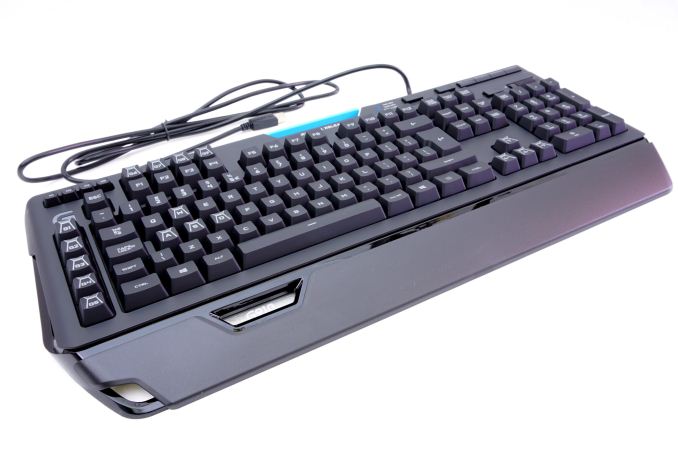
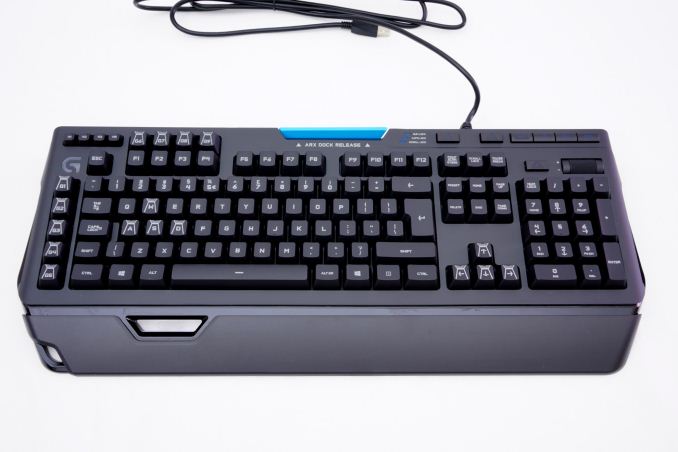
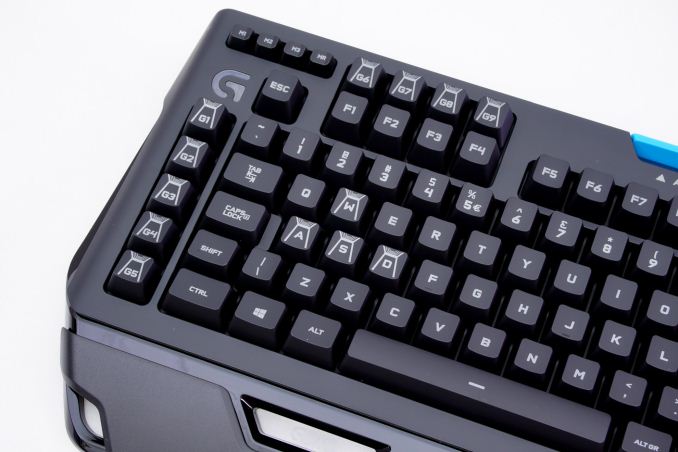
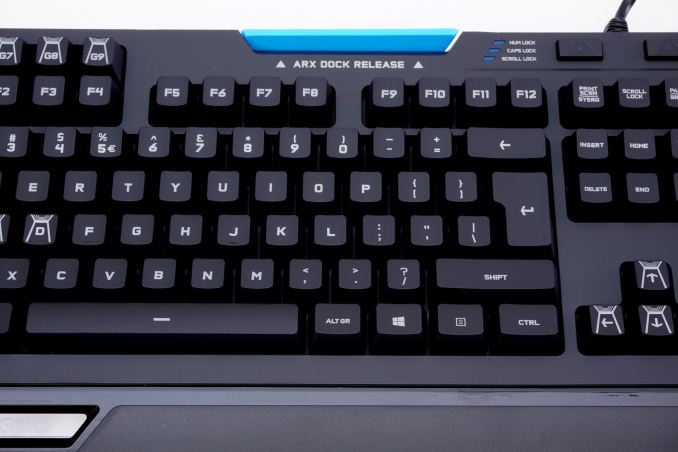
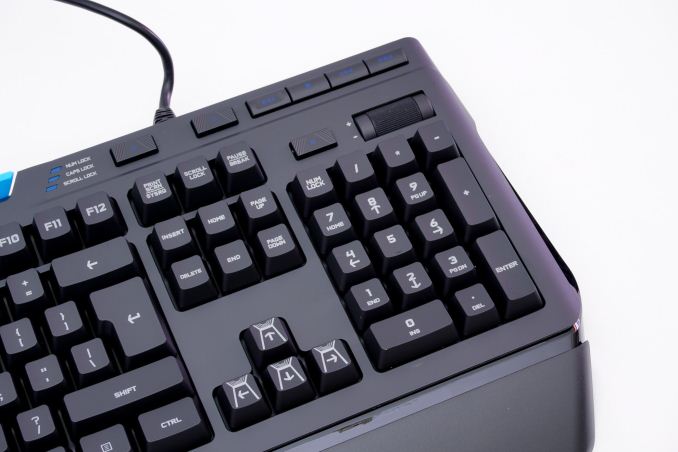
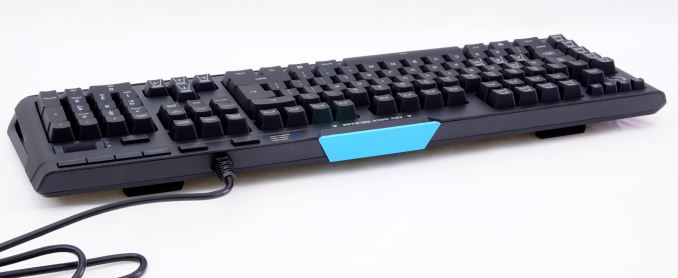
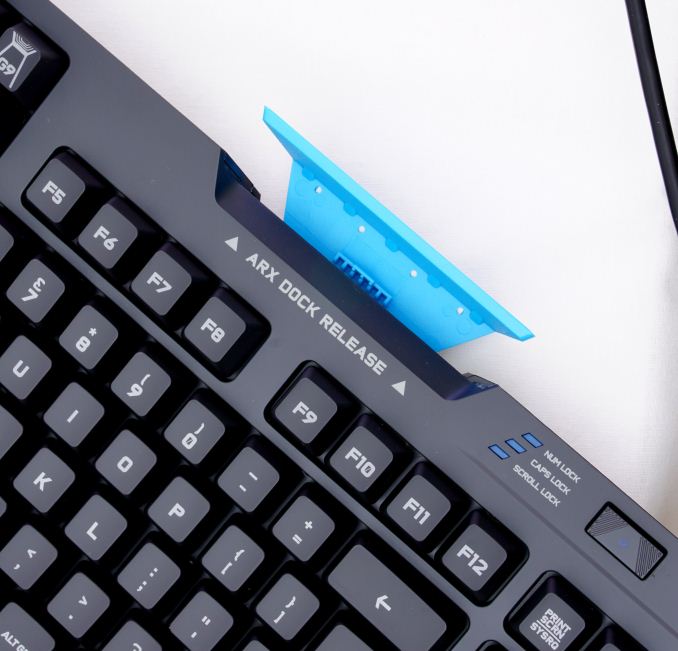
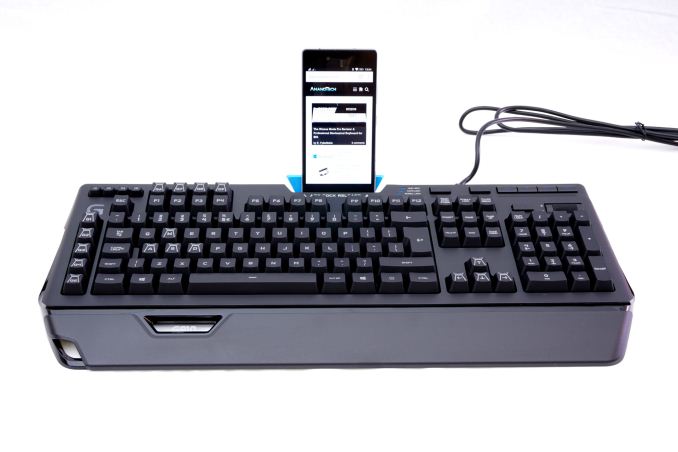
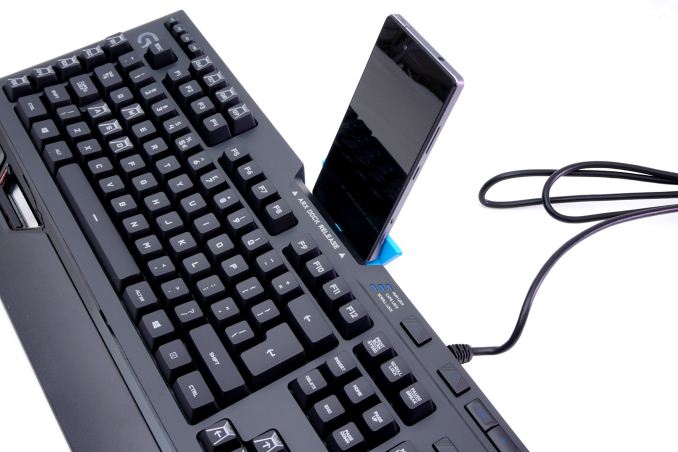
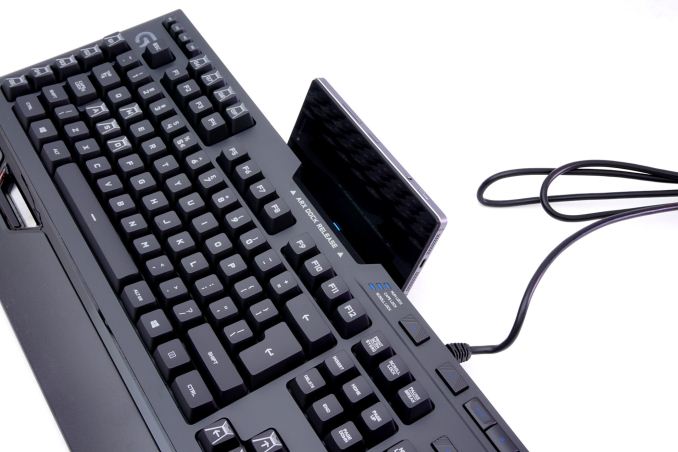
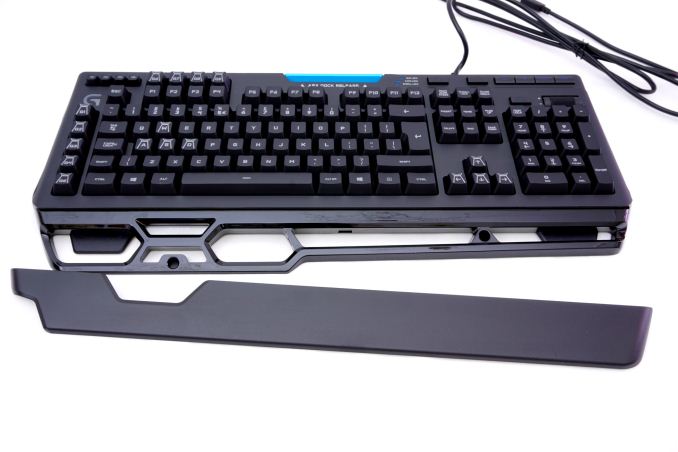
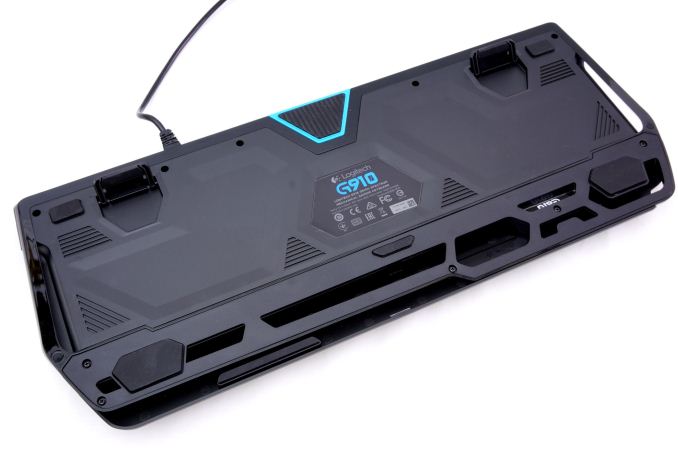













43 Comments
View All Comments
BrokenCrayons - Thursday, October 6, 2016 - link
I'd argue that no one is being ripped off. What you're seeing is a price the company believes the market is willing to endure. A lot of people believe they're reaping a benefit worth the cost when they pay $50-200 USD for a keyboard. What they get back is only emotional satisfaction as there's no evidence that a "gamer" keyboard makes your character run forward better when the W key is mashed over a membrane keyboard, but because the buyer believes they've reaped some sort of a reward, the purchase is made anyway. If you want to blame anyone for stupid keyboard prices, blame the ones who are buying these things. They created the market for them in the first place.cmdrdredd - Thursday, October 6, 2016 - link
I would also add that the gaming specific market has driven prices up with products bearing a team name or the name of the guy who won the last tournament. Putting fancy colors on the product, standout packaging, and an endorsement from a "pro" gamer and you drive the price up. Like you said there are people buying these when the same functionality can be had elsewhere. Companies like Razer really take advantage of this consumer segment.It's really a combination of the two IMO. The companies marketing gear specific to gaming to "give you the winning edge", as well as the people buying it. All manner of parts and peripherals are like this. It's not just keyboards.
Murloc - Thursday, October 6, 2016 - link
but it's not like the das keyboard which aims at being essential is cheap either.shabby - Thursday, October 6, 2016 - link
Lets just hope these companies don't figure out that putting "tactical" will also increase sales and desirability.BurntMyBacon - Friday, October 7, 2016 - link
Shoot me now.Stuka87 - Thursday, October 6, 2016 - link
Back in the day, those keyboards were cheap because they were mass produced, and they had no special features. These days, they are not mass produced in the quantities that they were back then. As production numbers go down, the price to produce goes up.But, I do think $180 is kind of steep. I paid $120 each for my Razer Black Widow Ultimates (both stealths), but I don't think I could justify $180.
DanNeely - Thursday, October 6, 2016 - link
...except they weren't. At its cheapest the IBM Model M's list price only approached $100 from the high side after launching for more than double that. And remember than inflation means that prices from 30 years ago are something like twice as expensive as the raw number suggests.https://geekhack.org/index.php?topic=9629.0
hansmuff - Saturday, October 8, 2016 - link
I think the cost got passed down to customers, but expensive PCs are just no longer a reality. Dell used to ship awesome keyboards until the early 2000's, they had ALPS switches (like the AT-101 series.) But it was all cost of the parcel, and once PCs were a commodity the price had to come down, so here are your $10 rubber domes.I very well remember buying a 'Cherry Gold' keyboard for good money back in the 90's. It was about $80 then.
theduckofdeath - Sunday, October 9, 2016 - link
Back in the days, a spare keyboard felt cheap because you'd just paid 5,000 bucks for a mid range PC. I can remember paying around $150 for a keyboard back in the days. Add inflation to that and you'll realise these keyboards today really aren't that expensive.Yes, there are a lot of $10 budget keyboards today but, you get what you pay for when buying those.
Beaver M. - Tuesday, October 18, 2016 - link
I remember very well paying 50 German Marks for different HP and Cherry mechanical keyboards (that I still have here). That would be about 25 Euro. So dont talk crap about them being expensive. Generally a set of mouse and keyboard with good quality would have been around 100 German Marks. Now its 100 Euro. Of course back then there was overpriced stuff too, but you were able to get high quality mechanical keyboards for MUCH MUCH less than today.I paid 80 Euro for my keyboard, and its still worse than the old mechanical ones from the ergonomics standpoint. It only has lighting and useless macros, which the old ones didnt have.